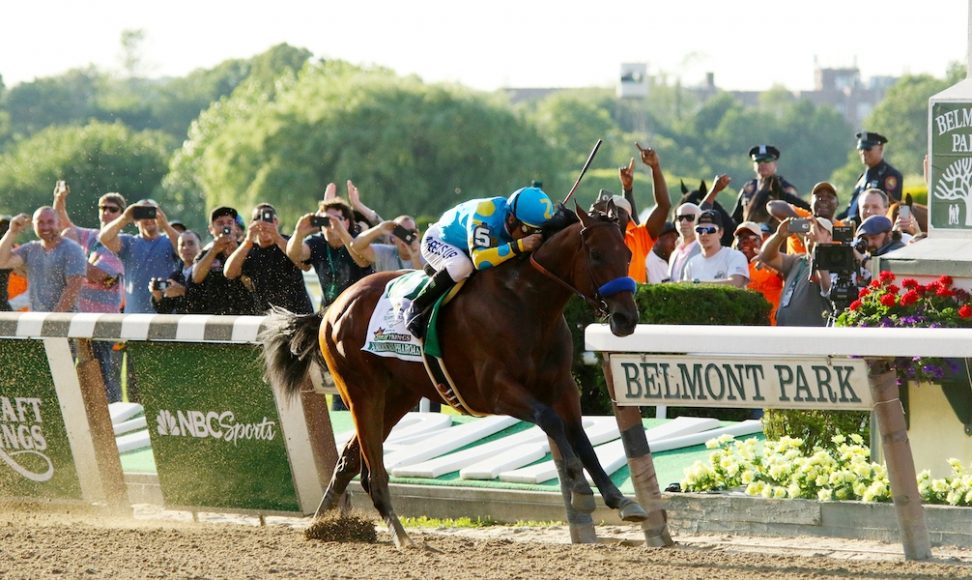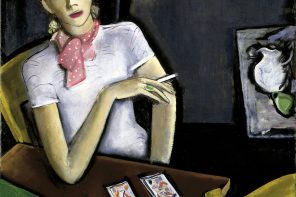With David O’Rourke, the chief executive of the New York Racing Association, proclaiming this “the year for traditions to go out the window,” the Triple Crown races are being run out of order for the first time since 1931, due to the coronavirus.
First up was the oldest of the Triple Crown races — and the first major sporting event in our area in quite some time — the Belmont Stakes, won in moving, historic fashion by the steady-as-he-goes, fleet-of-hoof bay colt Tiz the Law. The first New York-bred horse to win the Belmont since Forester in 1882, Tiz the Law gave Empire State sports fans something to cheer about in the time of corona, even if they did it from the safety of their own homes as no spectators were allowed.
Traditionally the last leg of the crown and the so-called “Test of the Champion” at 1 ½ miles, the race — which took place at Belmont Park June 20, two weeks after originally scheduled — was shortened to 1 1/8 miles. The Kentucky Derby, “the Run for the Roses,” usually the first race, will go off Sept. 5, with the Preakness, the usual second race, slated for Oct. 3 as a possible determinant of a Triple Crown winner.
Some racing experts consider this a case of making an excellent lemonade out of lemons as the contesting 3-year-old Thoroughbreds will have time to rest and mature, giving all three races strong fields. (Usually, the Derby features a wide field, with some of the losers then sitting out the Preakness three weeks later to play spoiler for any possible Crown bid in the Belmont.)
Like all grand traditions, the Crown itself is a construct. The three races were created independently of one another, with the Belmont Stakes first run in 1867; the Preakness, in 1873; and the Kentucky Derby, two years later. Although Sir Barton won all three in 1919 and sportswriters were using the term “Triple Crown” by 1923, it wasn’t until Gallant Fox captured the trifecta in 1930 that Charles Hatton of the Daily Racing Form coined the phrase.
Some of the greatest horses — including the greatest according to many polls, Man ’o War — never won the crown. (His owner — August Belmont Jr., for whose family the Belmont Stakes and Park were named — thought him too young for the Derby but did enter him in the Preakness and the Belmont in 1920, both of which he won.)
Another great colt never to win the Triple Crown was “the Gray Ghost” himself, Native Dancer, whose flashing whitish coat helped make him the first equine star in the new medium of black-and-white TV in the early 1950s. Bred by Alfred G. Vanderbilt Jr. in Maryland, the docile yet playful horse known simply as “the Dancer,” lost his only race to Dark Star in the 1953 Kentucky Derby. Jockey Eric Guerin was roundly criticized for the defeat, with one reporter observing, “He took that colt everywhere on the track except the ladies’ room.”
Man ’o War and Native Dancer, however, had their revenge. A magnificent stud, Man was the sire of the 1937 Crown champion War Admiral and the grandsire of his feisty little rival, Seabiscuit. When the Biscuit bested the Admiral on Nov. 1, 1938 in the “Match of the Century” at Pilmico Race Course, home of the Preakness, it proved what John McEnroe once said about playing Björn Borg: It’s not important to be the best, only to beat the best.
Man ’o War was also an ancestor, along with Native Dancer, of the greatest rivalry in horseracing history, Affirmed and Alydar, with the laid-back Affirmed beating his high-strung “uncle” to take the 1978 Triple Crown.
Recently, Affirmed, who died in 2001, came in fourth in the Virtual Kentucky Derby that was part of the festivities on May 2, the day the real Derby was supposed to be held. Using computer data, this Derby had Secretariat, the 1973 Triple Crown winner, besting Citation (1948) and Seattle Slew (1977), who placed and showed respectively. American Pharoah (2015) finished fifth. Thanks to the beauty of the digital age, the real American Pharoah was seen watching himself race the other greats on a TV placed before his stall at Ashford Stud in Kentucky. He seemed to take a keen interest in the race, perhaps because he was clipped by Whirlaway (1941), who, true to his idiosyncratic style, veered wide. Beloved “Whirly” is the only one of the 13 immortals to win the Crown and the Travers Stakes in Saratoga, the so-called “graveyard of champions.”
The May 2 day at the races also featured the Kentucky Turtle Derby, which had not been run since 1945, when the Derby was postponed due to World War II. Sponsored by Old Forester, the Derby’s official drink, the Turtle Derby saw a stunning upset in which dark, er, horse What the Turtleneck? beat out Galapa-GO! and Rocket to Nowhere, who finished second and third respectively.
The surprising What the Turtleneck? did not so much gallop to the win as saunter out of the circle in which the turtles were placed, proving that slow and steady sometimes does indeed win the race.





